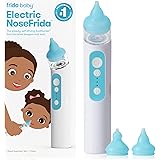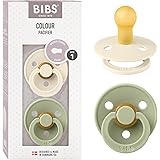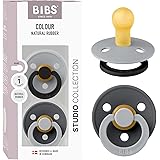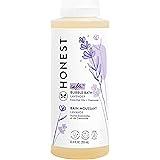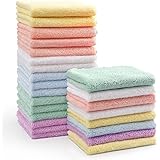The visual presentation in the accompanying video, showcasing the COOL & COOL Baby Care Products Range, underscores a critical aspect of infant care: the necessity of a comprehensive and carefully selected assortment of products. Establishing a foundational regimen for an infant’s delicate skin and hygiene involves a nuanced understanding of physiological differences and the impact of environmental factors. Consequently, the meticulous selection of baby care products is not merely a preference but an essential aspect of fostering healthy development and preventing dermal complications.
The Imperative of Specialized Baby Care Products
It is widely understood that infant skin possesses distinct physiological characteristics when contrasted with that of adults. The stratum corneum, the outermost layer of the epidermis, is significantly thinner in newborns and young children, rendering it more permeable. This increased permeability means that both beneficial substances and potential irritants are more readily absorbed. Furthermore, the immature epidermal barrier function contributes to a heightened susceptibility to dryness, irritation, and allergic reactions. Therefore, specialized formulations are imperative; products intended for infants are formulated with a primary focus on minimizing potential adverse effects while effectively cleansing and nourishing.
The acid mantle, which comprises the skin’s natural protective barrier, is also less developed in infants. This barrier, typically characterized by a slightly acidic pH, plays a crucial role in defending against microbial invasion and maintaining hydration. Disruption of this delicate pH balance by harsh cleansing agents can compromise the skin’s integrity, akin to dismantling the foundational layers of a protective wall. Hence, baby care products are rigorously formulated to be pH-neutral or slightly acidic, mirroring the natural conditions of healthy infant skin, thereby supporting its innate protective mechanisms.
Deconstructing the Comprehensive Baby Care Product Range
A truly comprehensive baby care product range extends far beyond a singular item; it represents a synergistic collection of formulations designed to address the multifaceted needs of an infant’s daily routine. Consider it as an expertly orchestrated symphony, where each instrument – or product – plays a distinct yet harmonious role in achieving an overarching objective: optimal infant skin health. The benefit of utilizing products from a single, well-researched range lies in the consistency of ingredient philosophy and formulation standards, which can mitigate the risk of adverse reactions that might arise from mixing disparate brands with potentially conflicting chemical profiles.
Moreover, a cohesive range often ensures that all aspects of an infant’s care, from bathing to moisturizing and diapering, are covered with products that have been tested to work effectively together. This integrated approach simplifies parental decision-making and provides a sense of reliability and predictability in the daily care regimen. The development of such ranges is typically underpinned by extensive dermatological research, ensuring that each component contributes positively to the overall well-being of the infant’s skin barrier and general hygiene.
Essential Categories Within a Baby Care Ensemble
Within a robust baby care product ensemble, several key categories are routinely identified, each serving a specific function in the daily care continuum:
-
Bathing Solutions: These typically include gentle, pH-balanced washes and shampoos. They are often formulated to be “tear-free,” meaning they contain mild surfactants that do not irritate the eyes. The objective is efficacious cleansing without stripping the skin of its natural oils, which is a common concern with harsher adult-oriented products. The selection of such solutions is paramount, as bath time is a frequent and direct exposure point for the infant’s skin.
-
Moisturization: Following cleansing, the application of emollients or humectant-rich lotions is critical for maintaining skin hydration and supporting the epidermal barrier. Products such as baby lotions, creams, and oils are designed to lock in moisture, preventing dryness and flakiness. The molecular structure of these formulations is optimized for rapid absorption and long-lasting efficacy without leaving a greasy residue, thereby ensuring sustained skin comfort and protection.
-
Diaper Area Care: The perianal and genital regions are particularly vulnerable to irritation due to constant exposure to moisture, friction, and biological waste. Diaper rash creams, often containing zinc oxide or petrolatum, create a protective barrier that shields the skin from irritants and promotes healing. It is understood that a robust barrier cream is indispensable for preventing and treating diaper dermatitis, a common affliction among infants.
-
Cleansing Wipes: For convenient cleansing during diaper changes or for quick clean-ups, baby wipes are indispensable. Premium wipes are formulated to be free from alcohol, parabens, phthalates, and strong fragrances. They are typically moistened with gentle, skin-friendly solutions that clean effectively while being hypoallergenic and dermatologically tested, ensuring minimal risk of irritation.
-
Massage Oils: Baby massage is recognized for its numerous developmental and bonding benefits. Specialized massage oils are formulated to be easily absorbed, non-comedogenic, and free from potential allergens. These oils often incorporate natural extracts and vitamins, contributing to skin nourishment and elasticity, thereby enhancing the overall tactile experience for both caregiver and infant.
The Science of Formulation: Key Ingredients and Their Functions
The efficacy and safety of baby care products are intrinsically linked to their ingredient profiles. A nuanced understanding of various components is crucial for informed selection. Beneficial ingredients frequently observed in high-quality baby formulations include natural oils like almond, jojoba, and sunflower, which are rich in essential fatty acids and provide excellent emollient properties. Glycerin and panthenol are commonly utilized for their humectant capabilities, attracting and retaining moisture in the skin, thus contributing to barrier integrity.
Conversely, certain ingredients are generally avoided in baby care due to their potential to irritate or cause adverse reactions. These include parabens, which are preservatives, and phthalates, plasticizers used in fragrances, both of which have been subjects of concern regarding endocrine disruption. Sulfates, common in many cleansing agents, can be overly harsh and strip natural oils, while strong artificial dyes and fragrances are frequently implicated in contact dermatitis and allergic reactions. Consequently, the industry has gravitated towards “hypoallergenic” and “dermatologically tested” claims, signifying formulations that have undergone rigorous evaluation to minimize sensitization potential.
Understanding pH Balance and the Infant Skin Microbiome
The maintenance of the skin’s natural acidic pH, typically between 4.5 and 5.5, is paramount for infants. This slightly acidic environment is crucial for the optimal functioning of enzymes involved in lipid synthesis, which are vital for a healthy skin barrier. Harsh alkaline products, by disrupting this pH balance, can impede these enzymatic processes, leading to a weakened barrier and increased water loss. Such alterations render the skin more susceptible to dryness, irritation, and the colonization of pathogenic microorganisms.
Furthermore, the infant skin is home to a nascent microbiome, a complex ecosystem of beneficial bacteria. This microbial community plays a significant role in developing the skin’s immune defenses and overall health. Disrupting this delicate balance with aggressive cleansing agents or antibacterial ingredients can inadvertently diminish the beneficial flora, potentially allowing opportunistic pathogens to thrive. Therefore, formulations are meticulously developed to be gentle, preserving the integrity of both the skin barrier and its burgeoning microbiome, thereby fostering a robust and resilient dermal environment.
Selecting Premium Baby Care Solutions: A Parental Mandate
The selection of premium baby care solutions is not a trivial task; it demands careful consideration of various factors that extend beyond mere brand recognition. The individual skin type of the infant, prevalent climatic conditions, and any specific dermatological concerns, such as eczema or extreme dryness, must inform product choices. This process can be likened to an architect selecting building materials for a structure that must withstand particular environmental stresses while accommodating its delicate inhabitants. The robustness of the chosen materials directly influences the long-term integrity and comfort of the living space.
Moreover, the role of certifications and adherence to stringent regulatory standards cannot be overstated. Marks such as “organic,” “natural,” “Ecocert,” or “Cosmos” on products can provide an additional layer of assurance regarding ingredient sourcing and processing. These certifications often signify compliance with ethical and environmental guidelines, which, while not directly related to efficacy, speak to a broader commitment to quality and safety. Consequently, parents are encouraged to prioritize products that demonstrate transparency in their ingredient lists and have been subjected to rigorous independent testing, thus ensuring that what is applied to their child’s skin aligns with the highest standards of care.
Best Practices for Application and Usage
Effective utilization of baby care products extends beyond their selection; it encompasses proper application techniques and adherence to usage guidelines. Prior to widespread use, it is generally recommended that a small amount of any new product be applied to a discreet area of the infant’s skin, such as the inner forearm. This “patch test” permits observation for any localized adverse reactions over a 24-hour period before full application, minimizing the risk of a widespread allergic response. This precautionary measure is a cornerstone of responsible dermatological practice for infants.
Furthermore, products should be applied with gentle, sweeping motions, avoiding vigorous rubbing, which can irritate sensitive skin. For cleansing, tepid water is preferred over hot water, and bath times should be kept relatively brief to prevent excessive drying of the skin. Attention must also be paid to the storage conditions of baby care products; they should be kept in cool, dry places, away from direct sunlight, to preserve their stability and efficacy. Moreover, observing the product’s expiration date and understanding its shelf life once opened are crucial for ensuring that the active ingredients remain potent and free from contamination. This holistic approach to usage safeguards the infant’s health and maximizes the benefits derived from each product.
Ultimately, navigating the extensive world of baby care products, exemplified by ranges such as the COOL & COOL Baby Care Products Range, necessitates a blend of scientific understanding and practical application. The objective is to establish a regimen that consistently nurtures and protects, recognizing the profound impact these choices have on an infant’s immediate comfort and long-term dermatological health. This careful stewardship is a testament to the dedication invested in fostering an environment conducive to healthy development.


